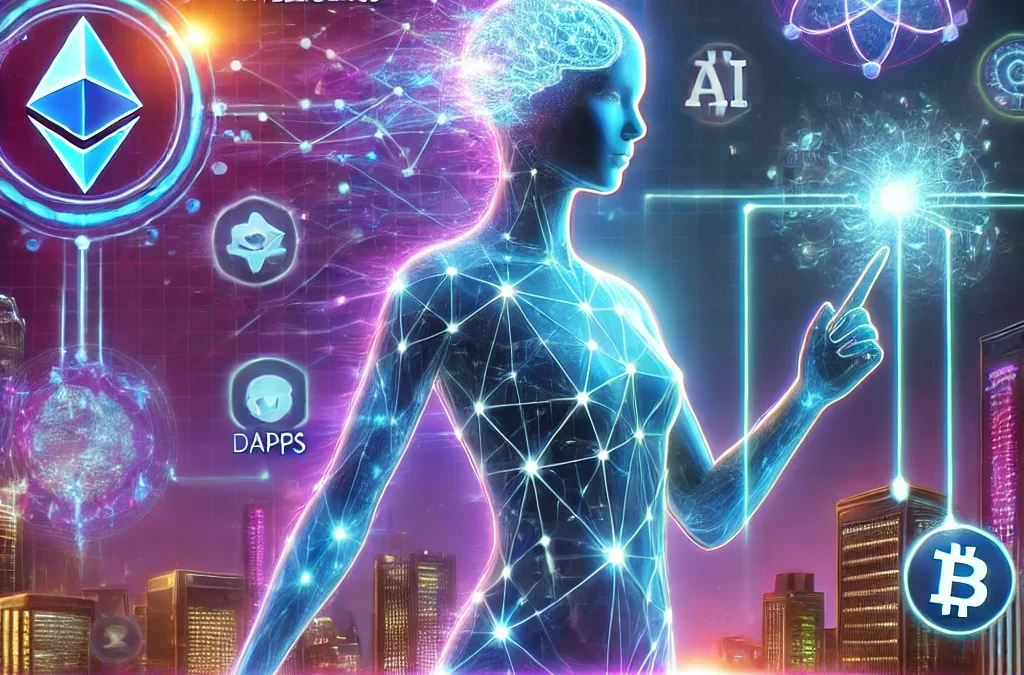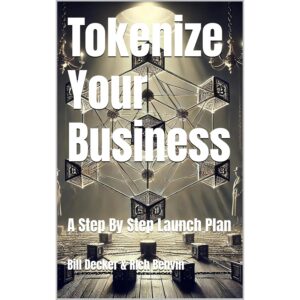The Future of Decentralized AI: How Adaptive Intelligence is Shaping Web3
The rapid convergence of Artificial Intelligence (AI) and Web3 technologies is shaping the future of decentralization, automation, and digital governance. As blockchain, decentralized applications (DApps), and cryptocurrencies evolve, adaptive AI is emerging as a powerful force that can optimize, secure, and enhance these ecosystems.
This article explores how decentralized AI is redefining Web3, the impact of adaptive intelligence, and what the future holds for this transformative synergy.
🚀 Understanding Decentralized AI and Web3
What is Web3?
Web3 is the next evolution of the internet, characterized by:
✅ Decentralization – Eliminating reliance on centralized authorities.
✅ Blockchain Technology – Ensuring transparency, security, and immutable records.
✅ Smart Contracts – Automating transactions and agreements.
✅ Tokenization & DeFi – Enabling decentralized financial systems and incentives.
Unlike Web2, where major corporations control data and services, Web3 empowers users with control, privacy, and ownership over digital assets and online interactions.
What is Decentralized AI?
Decentralized AI refers to artificial intelligence systems that operate on blockchain or distributed networks, without a single controlling entity. These AI models can learn, adapt, and function autonomously while maintaining transparency, security, and fairness.
Key features of decentralized AI include:
✅ Distributed Learning – AI models are trained on decentralized networks, reducing bias and central control.
✅ Blockchain Security – AI decisions are auditable and stored transparently on-chain.
✅ Autonomous AI Agents – AI-powered smart contracts and DApps operate independently in Web3 ecosystems.
Adaptive AI takes this concept further by continuously evolving, learning from data, and optimizing its performance dynamically within decentralized networks.
🔍 How Adaptive Intelligence is Reshaping Web3
Adaptive AI is revolutionizing Web3 in various ways, making blockchain ecosystems smarter, more efficient, and more autonomous. Let’s explore some key areas:
1️⃣ AI-Powered Smart Contracts
🔹 The Challenge:
Traditional smart contracts execute predefined rules but lack adaptability. They cannot modify terms or optimize based on new data.
🔹 The AI Solution:
- Adaptive AI-driven smart contracts can analyze market trends, predict risks, and adjust rules dynamically.
- AI can detect fraud, security threats, and inefficiencies, optimizing contract execution.
✅ Example:
In DeFi (Decentralized Finance), AI-powered contracts can automatically adjust lending rates based on market conditions, preventing flash loan attacks or sudden liquidity crises.
2️⃣ Decentralized AI Agents in DAOs
🔹 The Challenge:
Decentralized Autonomous Organizations (DAOs) rely on community voting, but decision-making can be slow and inefficient.
🔹 The AI Solution:
- AI agents in DAOs can analyze proposals, provide data-driven insights, and predict the potential success of initiatives.
- They assist in governance by recommending optimal decisions based on historical data and real-time conditions.
✅ Example:
An AI-powered DAO can manage treasury funds more efficiently by dynamically allocating resources to high-impact projects.
3️⃣ AI-Driven Personalized DApps
🔹 The Challenge:
Most DApps provide one-size-fits-all experiences, lacking personalization and adaptability.
🔹 The AI Solution:
- AI-enhanced DApps can offer personalized recommendations for finance, gaming, and content consumption.
- AI adapts in real time, making DApps more user-friendly and engaging.
✅ Example:
A Web3 music streaming DApp can use AI to create personalized NFT playlists and recommendations based on user listening behavior.
4️⃣ Decentralized AI in DeFi & Trading
🔹 The Challenge:
DeFi platforms require real-time analytics, risk assessment, and market predictions, which are difficult to manage manually.
🔹 The AI Solution:
- AI models can analyze on-chain and off-chain data to predict price movements and detect anomalies.
- AI-powered trading bots can execute high-frequency, optimized trades in a decentralized environment.
✅ Example:
An AI-powered decentralized hedge fund can autonomously rebalance a user’s crypto portfolio based on market trends and risk assessment.
5️⃣ AI-Enhanced Security for Web3
🔹 The Challenge:
Web3 ecosystems are vulnerable to hacks, phishing attacks, and smart contract exploits.
🔹 The AI Solution:
- AI-driven security audits can identify vulnerabilities in smart contracts before deployment.
- AI-based fraud detection systems can monitor transactions in real time, flagging suspicious activities.
✅ Example:
AI-powered blockchain security firms like CertiK already use AI to detect vulnerabilities in DeFi projects.
6️⃣ AI & Blockchain for Decentralized AI Marketplaces
🔹 The Challenge:
Most AI development happens in centralized environments controlled by big tech.
🔹 The AI Solution:
- Blockchain enables decentralized AI marketplaces, where developers can share and monetize AI models securely.
- AI models are verified on-chain to ensure transparency and prevent tampering.
✅ Example:
Platforms like SingularityNET allow developers to sell AI services without a middleman, ensuring fair compensation.
🚧 Challenges in Integrating AI with Web3
While the future of decentralized AI is promising, several challenges must be addressed:
1️⃣ Scalability Issues
- Blockchain networks struggle with high computational costs.
- Solution: Use Layer-2 scaling solutions and off-chain AI processing.
2️⃣ Ethical AI & Bias
- AI models can inherit bias from training data.
- Solution: Decentralized federated learning can ensure fairness and diverse datasets.
3️⃣ Energy Consumption
- AI and blockchain both require significant computational power.
- Solution: Use eco-friendly blockchains like Ethereum 2.0 and proof-of-stake models.
4️⃣ Regulation & Compliance
- Governments are concerned about AI automation in finance and governance.
- Solution: Develop self-regulating AI frameworks in compliance with global policies.
🚀 The Future: Where Are We Headed?
The fusion of decentralized AI and Web3 is paving the way for:
✅ AI-powered DAOs managing complex ecosystems.
✅ Self-learning DApps that evolve based on user behavior.
✅ Blockchain-secured AI models ensuring transparency and fairness.
✅ Web3-native AI assistants that provide decentralized, censorship-resistant services.
As these technologies mature, we can expect Web3 to become more autonomous, adaptive, and intelligent, shaping a future where AI and decentralization work hand in hand.
🔮 Final Thoughts
The future of decentralized AI is bright, offering groundbreaking innovations across DeFi, DAOs, gaming, security, and DApp development. By integrating adaptive intelligence, Web3 ecosystems can become smarter, more efficient, and truly autonomous.
💡 Are You Ready for the AI-Powered Web3 Era?
Platforms like Edaptus.com are at the forefront of this evolution, leveraging AI-driven decentralization to build the next generation of intelligent, adaptive applications.
🚀 The question is no longer if AI will shape Web3—but how fast it will happen. Stay ahead, innovate, and embrace the future! 🌍💡
📢 Join the Discussion!
What are your thoughts on decentralized AI? How do you see it transforming Web3? Drop a comment below and let’s discuss! 👇🚀



